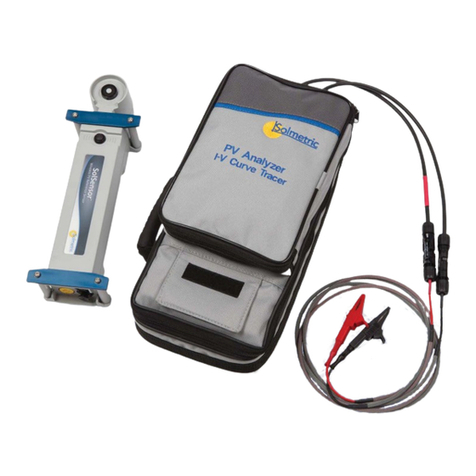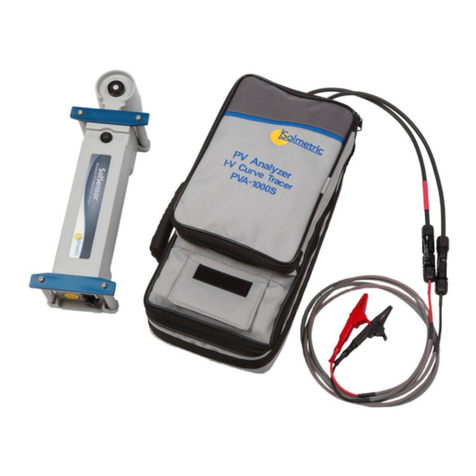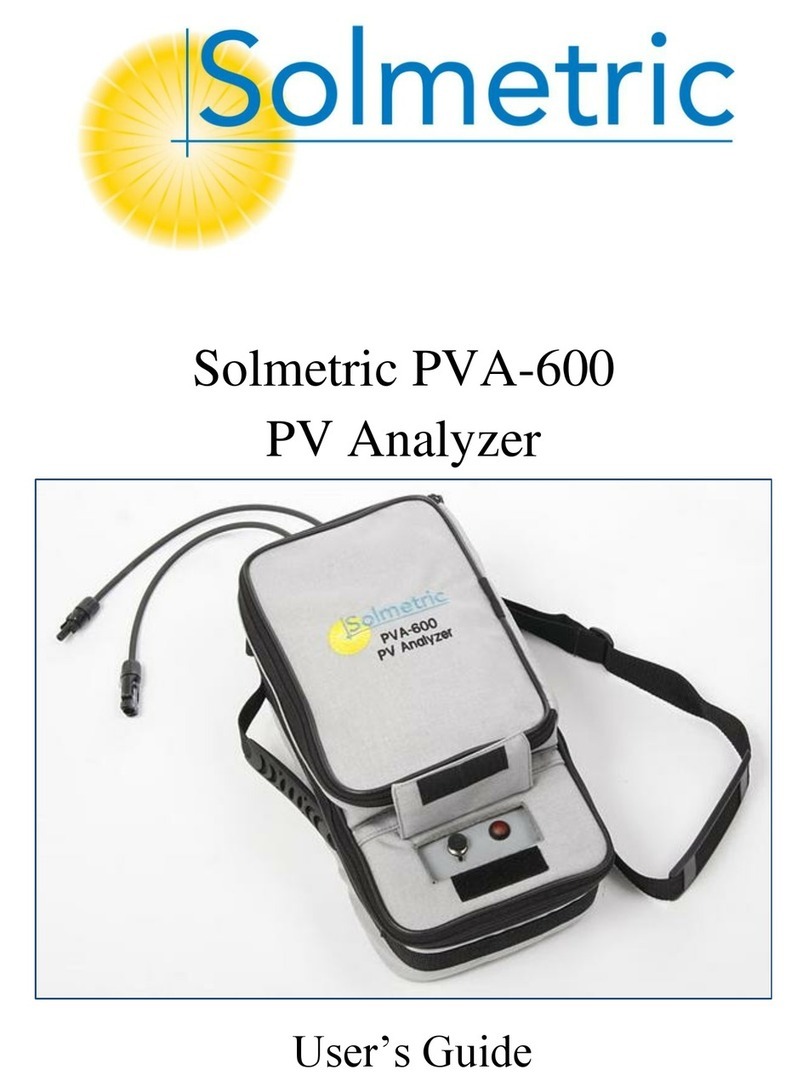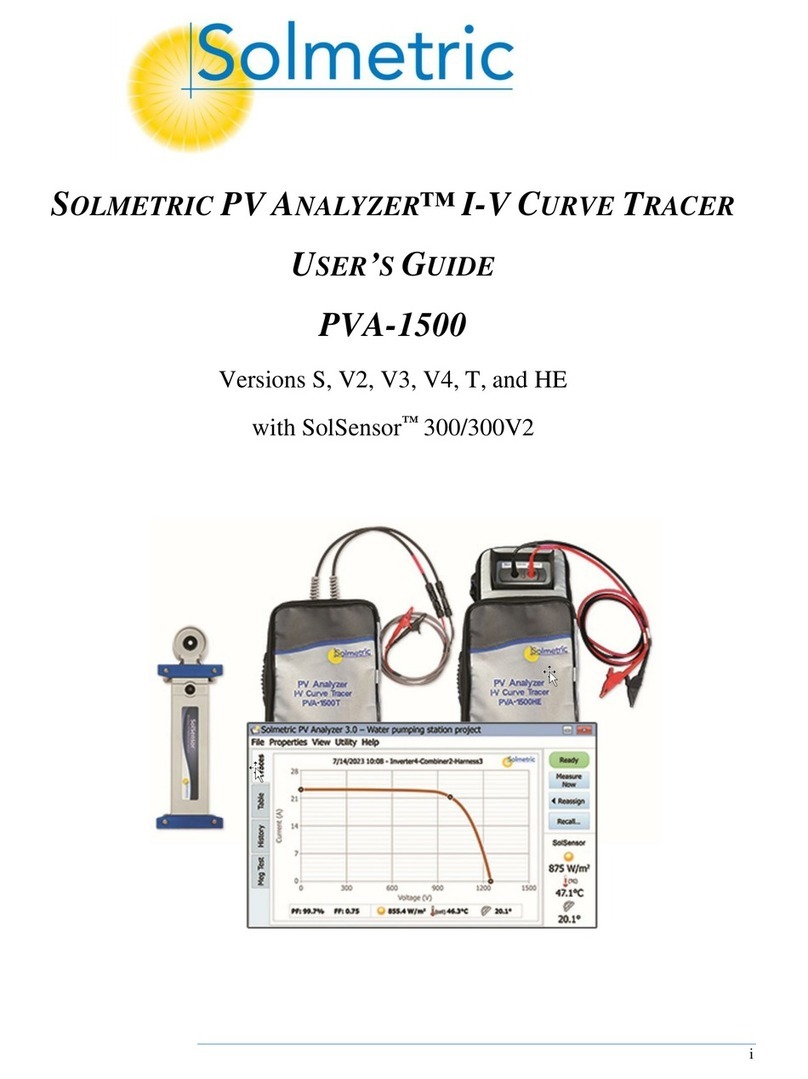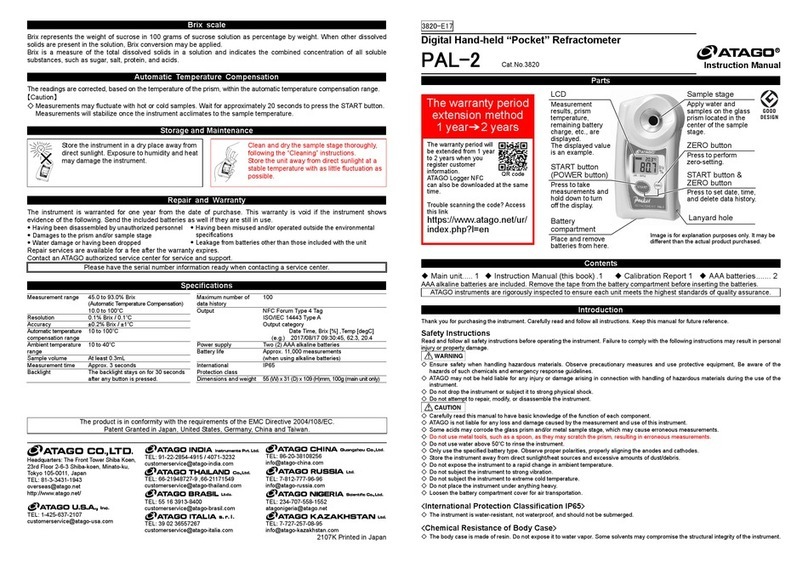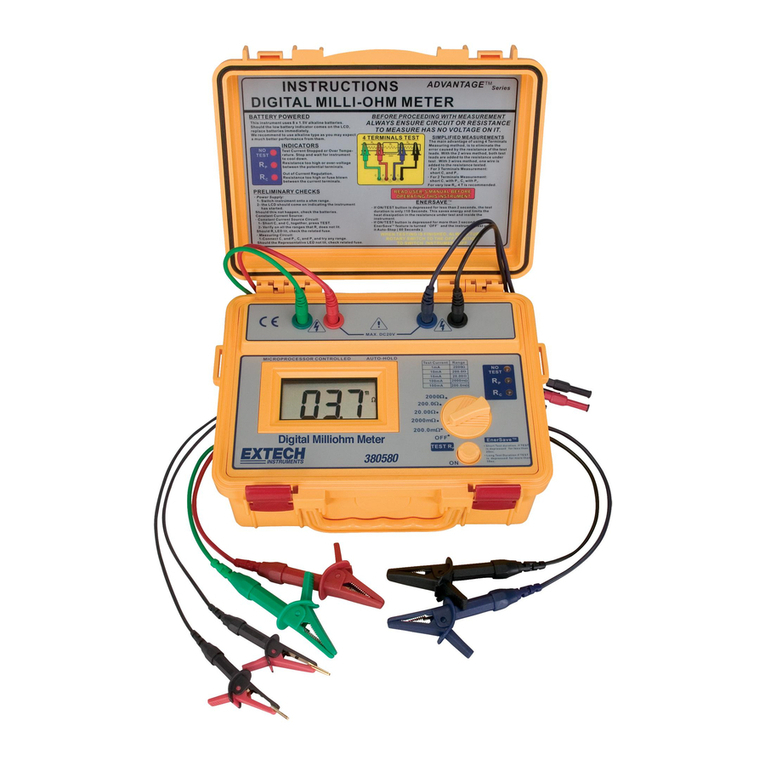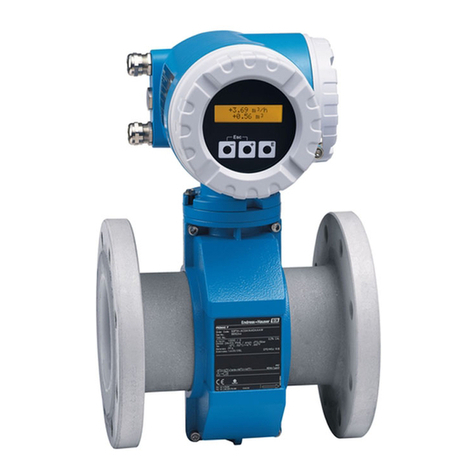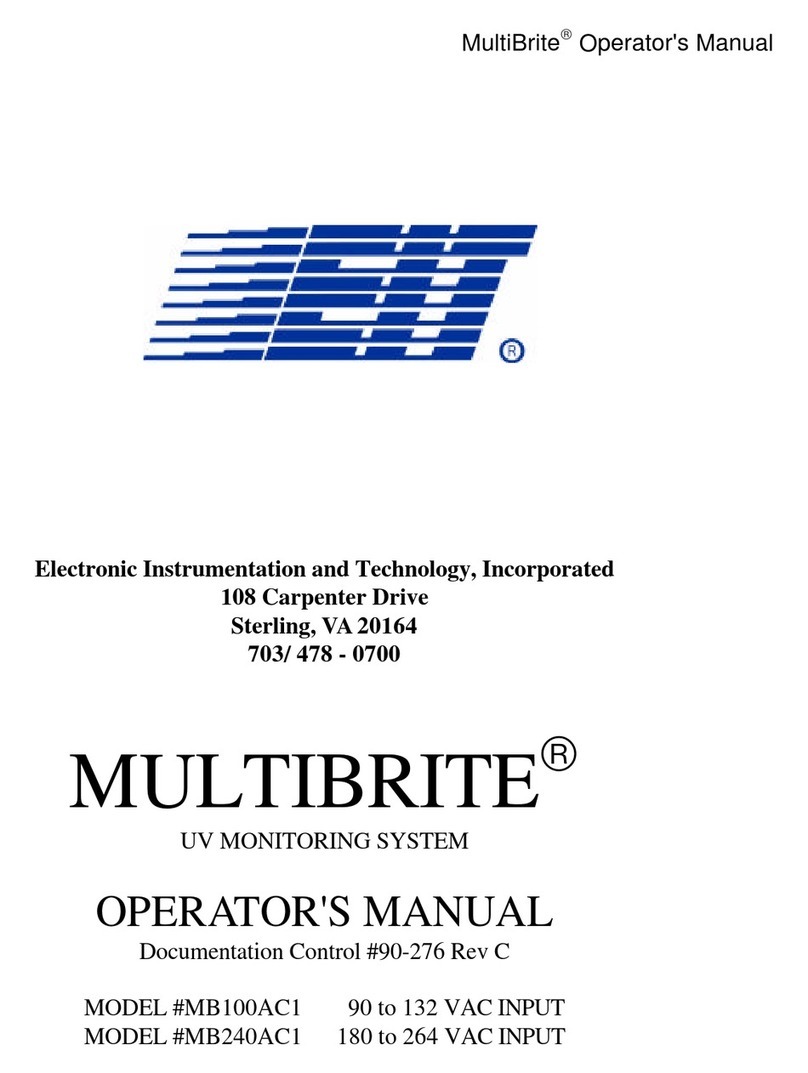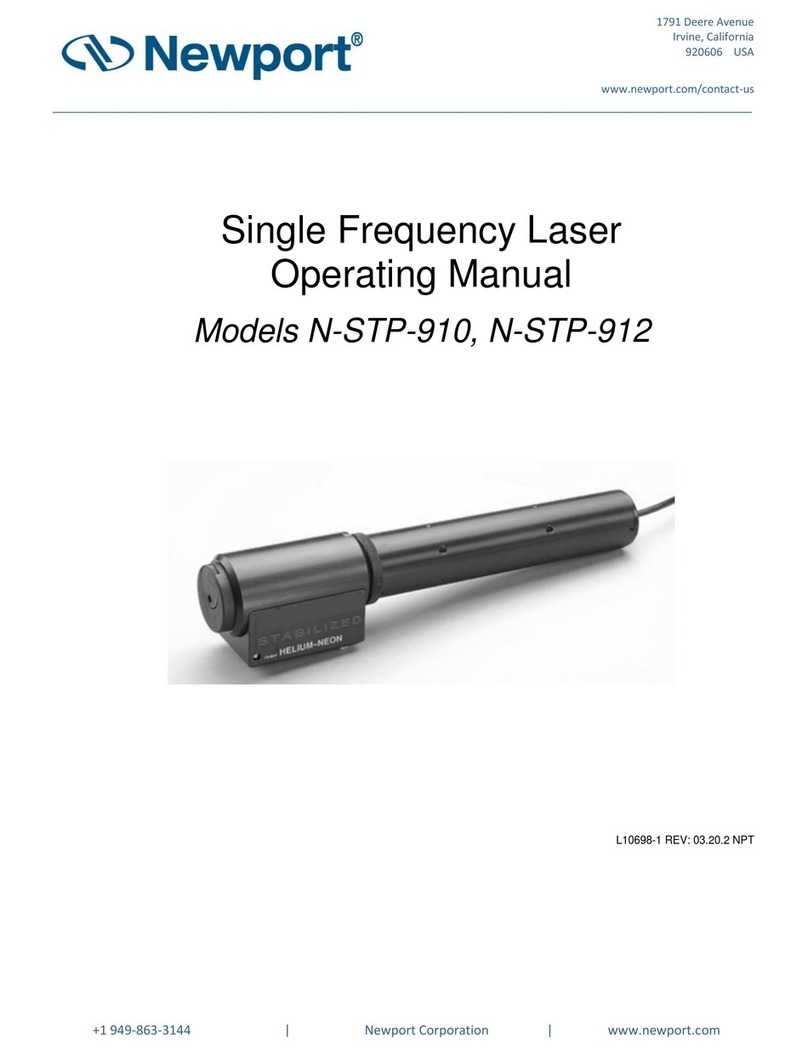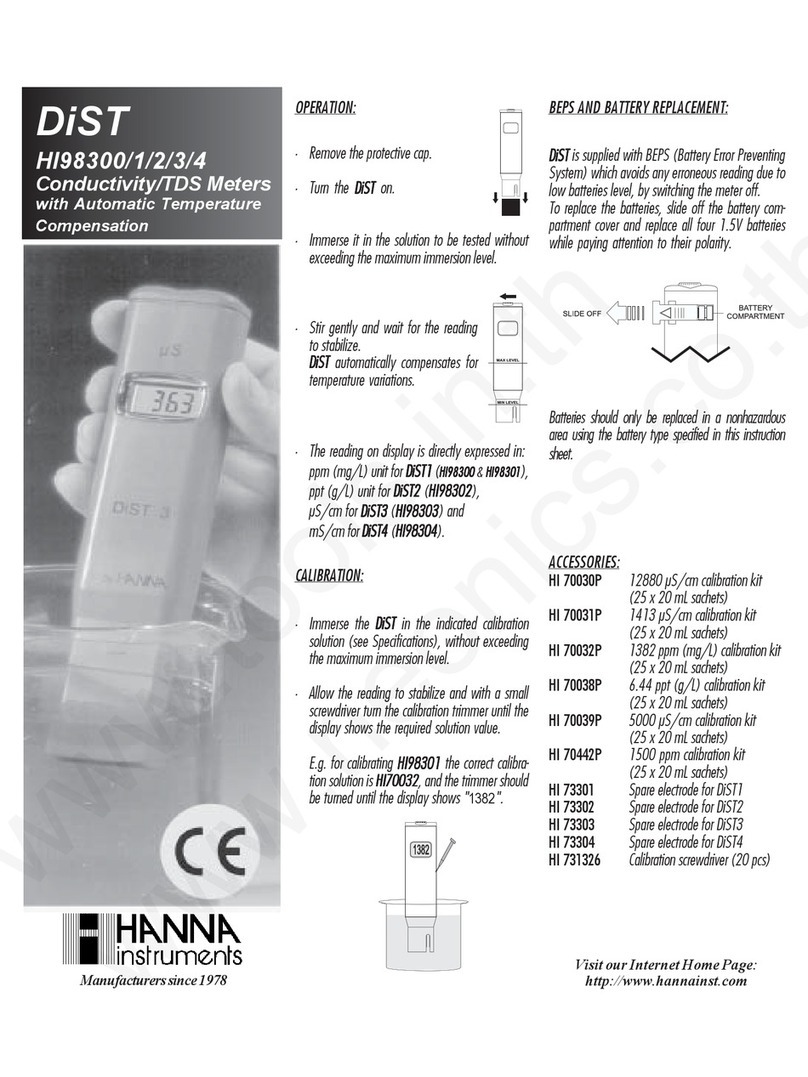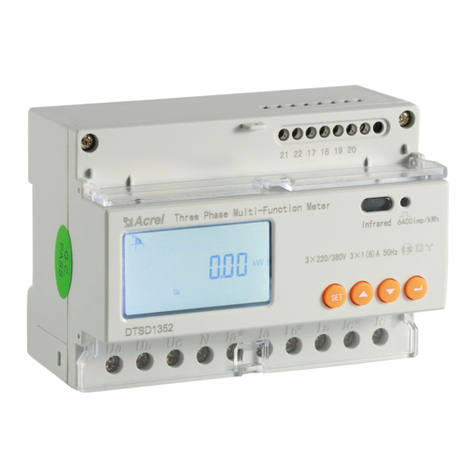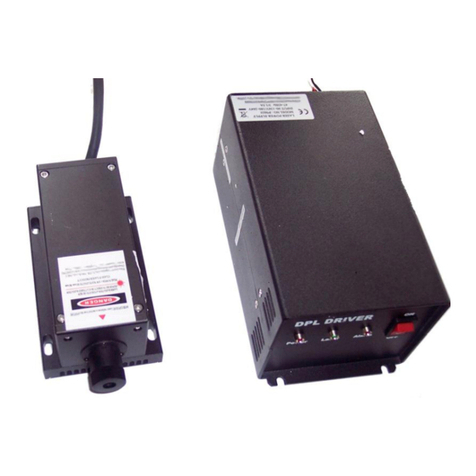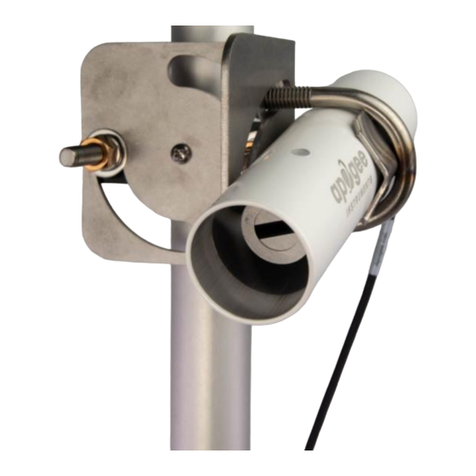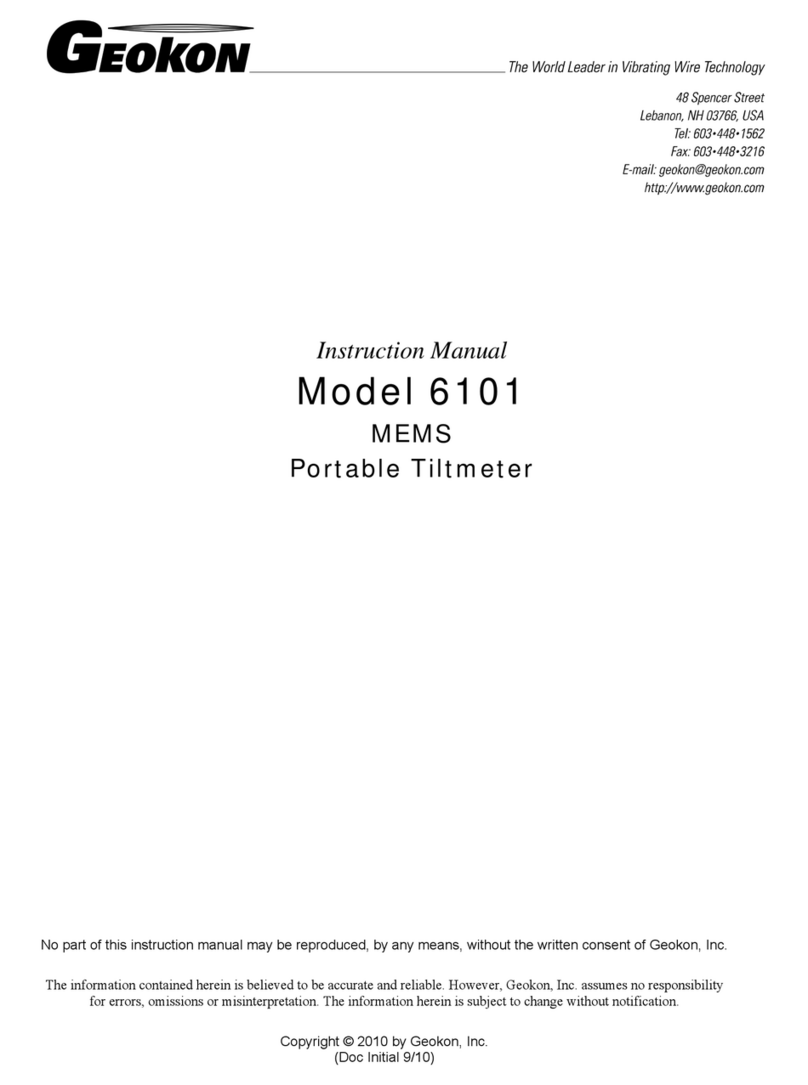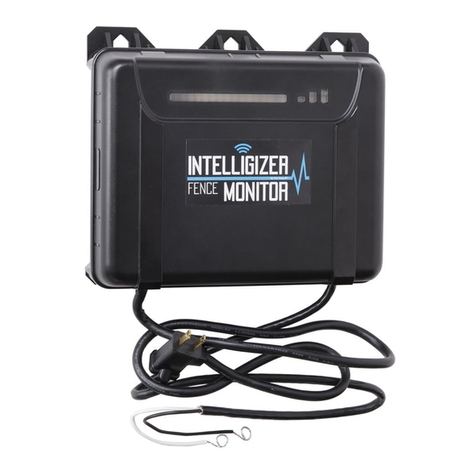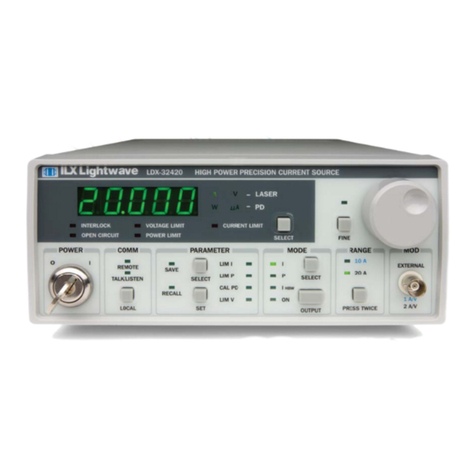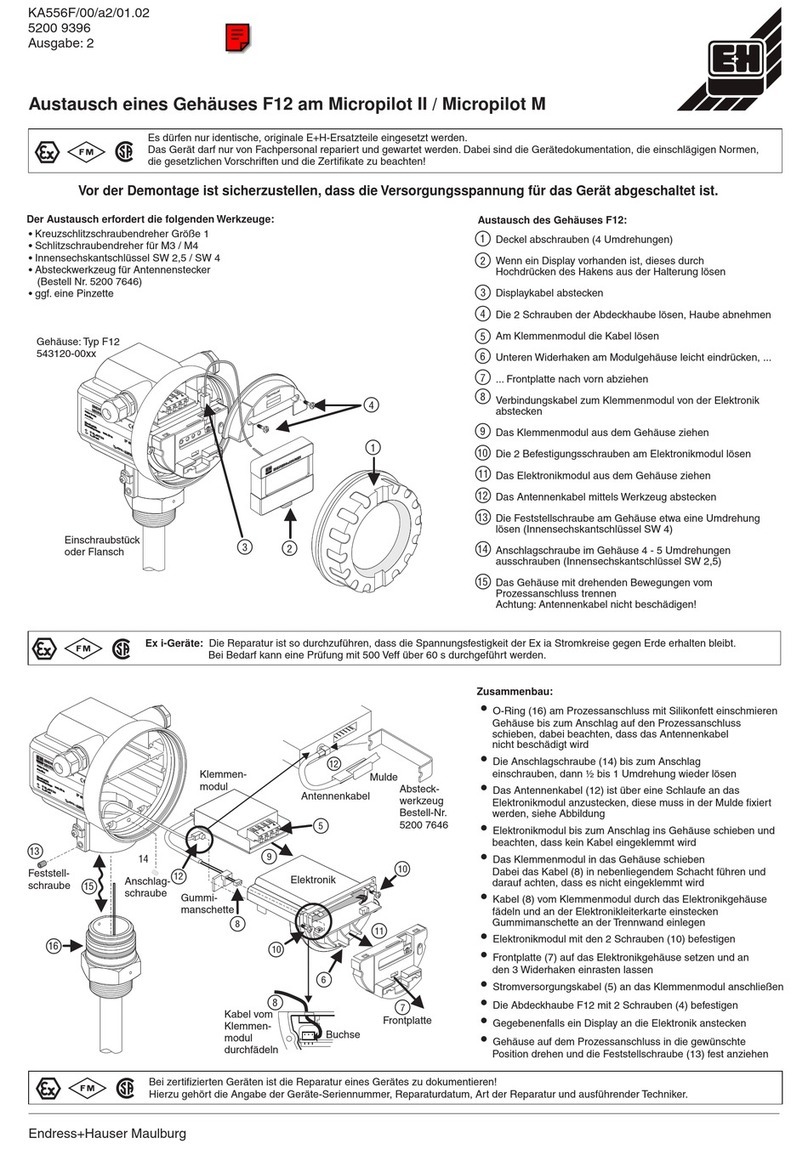
iii
Transfers of PC Software or Embedded Software
You may transfer all your rights to use the PC Software and
Documentation to another person or legal entity provided
you transfer this Agreement, the PC Software, and
Documentation, including all copies, updates and prior
versions to such person or entity and that you retain no
copies, including copies stored on computer.
You may transfer all your rights to use the Embedded
Software and Documentation to another person or legal
entity provided you transfer this Agreement, the hardware
associated with the Embedded Software, and the Embedded
Software and Documentation, including all copies, updates
and prior versions to such person or entity and that you
retain no copies, including copies stored on computer.
Limited Hardware and Software Warranty
This Solmetric PC Software and Embedded Software and
the Solmetric PV analyzer hardware (“Hardware”) are
warranted against defects in materials and workmanship for
a period of one year. During the warranty period, Solmetric
will, at its option, either repair or replace products which
prove to be defective. The warranty period begins on the
date of shipment.
For warranty service or repair, this product must be
returned to Solmetric. For products returned to Solmetric
for warranty service, the Buyer shall pay for shipping
charges to send the product to Solmetric, and Solmetric
shall pay for shipping charges to return the product to the
Buyer. However, the Buyer shall pay all shipping charges,
duties, and taxes for products returned to Solmetric from
another country.
The foregoing warranty shall not apply to defects resulting
from improper or inadequate maintenance by the Buyer,
unauthorized modification or misuse, or operation outside
of the environmental specifications for the product.
Unauthorized modification includes disassembly of the
Hardware or removal of any part of the Hardware
(including opening the PV analyzer I-V Unit). The design,
construction, and measurement of any system or building
by the Buyer is the sole responsibility of the Buyer.
Solmetric does not warrant the Buyer’s system, products, or
malfunction of the Buyer’s system or products. In addition
Solmetric does not warrant any damage that occurs as a
result of the Buyer’s system, product, or the Buyer’s use of
Solmetric products.
To the extent permitted by applicable law, THE
FOREGOING LIMITED WARRANTY IS IN LIEU OF
ALL OTHER WARRANTIES OR CONDITIONS,
EXPRESS OR IMPLIED, AND WE DISCLAIM ANY
AND ALL IMPLIED WARRANTIES OR CONDITIONS,
INCLUDING ANY IMPLIED WARRANTY OF TITLE,
NONINFRINGEMENT, MERCHANTABILITY OR
FITNESS FOR A PARTICULAR PURPOSE, regardless of
whether we know or had reason to know of your particular
needs. No employee, agent, dealer, or distributor of ours is
authorized to modify this limited warranty, nor to make any
additional warranties.
SOME STATES DO NOT ALLOW THE EXCLUSION
OF IMPLIED WARRANTIES, SO THE ABOVE
EXCLUSION MAY NOT APPLY TO YOU. THIS
WARRANTY GIVES YOU SPECIFIC LEGAL RIGHTS,
AND YOU MAY ALSO HAVE OTHER RIGHTS
WHICH VARY FROM STATE TO STATE.
Limited Remedy
Our entire liability and your exclusive remedy shall be the
replacement or repair of any Solmetric Hardware or
Solmetric PC Software or Embedded Software not meeting
our Limited Hardware and Software Warranty which is
returned to us or to an authorized Dealer or Distributor with
a copy of your receipt.
IN NO EVENT WILL WE BE LIABLE TO YOU FOR
ANY DAMAGES, INCLUDING ANY LOST PROFITS,
LOST SAVINGS, INJURY, DEATH, OR OTHER
INCIDENTAL OR CONSEQUENTIAL DAMAGES
ARISING FROM THE USE OF OR THE INABILITY TO
USE THE PC SOFTWARE, EMBEDDED SOFTWARE,
HARDWARE, OR DOCUMENTATION (EVEN IF
SOLMETRIC OR AN AUTHORIZED DEALER OR
DISTRIBUTOR HAS BEEN ADVISED OF THE
POSSIBILITY OF THESE DAMAGES), OR FOR ANY
CLAIM BY ANY OTHER PARTY.
SOME STATES DO NOT ALLOW THE LIMITATION
OR EXCLUSION OF LIABILITY FOR INCIDENTAL
OR CONSEQUENTIAL DAMAGES, SO THE ABOVE
LIMITATION MAY NOT APPLY TO YOU.
Term and Termination
This agreement takes effect upon your use of the PC
Software, Embedded Software, or Hardware and remains
effective until terminated. You may terminate it at any time
by destroying all copies of the PC Software, Embedded
Software, and Documentation in your possession and
returning the Hardware to Solmetric or to an authorized
distributor. It will also automatically terminate if you fail to
comply with any term or condition of this license
agreement. You agree on termination of this license to
either return to us or destroy all copies of the PC Software,
Embedded Software, and Documentation in your
possession and to return the Hardware to us or to an
authorized distributor.





















